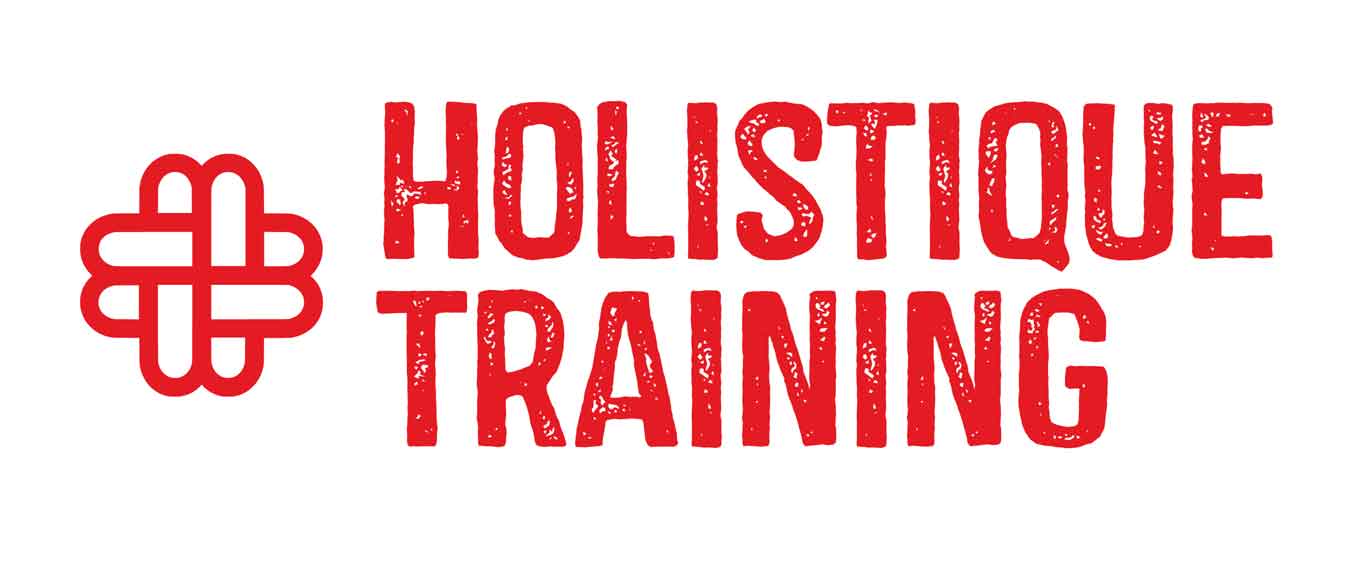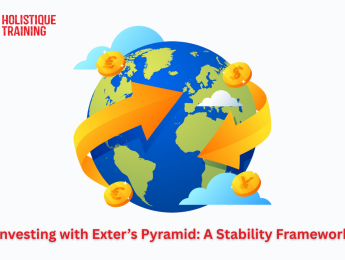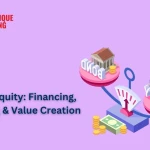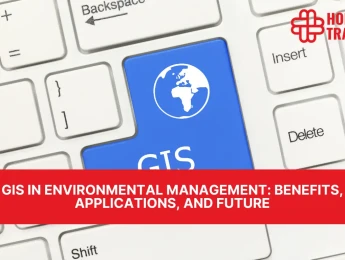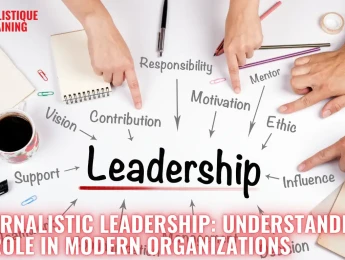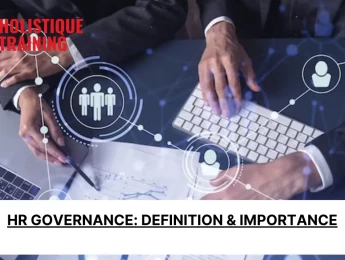- Table of Contents
- Introduction
- What is Exter’s Pyramid?
- The History of Exter’s Pyramid
- Exter’s Pyramid Asset Classes and Their Positions
- Top Layers (Broadest, Riskiest, Least Liquid)
- Middle Layers (Moderate Risk and Liquidity)
- Bottom Layers (Narrowest, Safest, Most Liquid)
- Why is Exter’s Pyramid Important?
- Understanding Market Behavior During Financial Crises
- Highlighting Systemic Risks and Vulnerabilities
- Emphasizing the Importance of Liquidity Management
- Facilitating Effective Risk Management and Portfolio Diversification
- Enhancing Investor Education and Financial Literacy
- Supporting Sustainable Economic Development
- Providing Insight for Policymakers and Central Banks
- Money Movements in Good and Bad Times
- Implementing Exter’s Pyramid in Investment Strategies
- 1. Strategic Portfolio Allocation Based on Economic Conditions
- 2. Tactical Rebalancing and Dynamic Adjustments
- 3. Diversification Across Asset Classes
- 4. Liquidity Management
- 5. Incorporating Gold and Precious Metals
- 6. Balancing Risk and Return
- 7. Leveraging Exter’s Pyramid for Crisis Preparedness
- Exter’s Pyramid and Sustainable Finance Development
- Conclusion
Introduction
Financial systems, economies, and markets are complex networks influenced by countless variables, from investor sentiment and geopolitical events to central bank policies and global economic health. Amidst this complexity, investors and analysts seek frameworks to better understand the dynamics of financial stability and risk. One such insightful model is Exter’s Pyramid, a conceptual representation designed to illustrate asset classes based on their levels of risk and liquidity. Developed by economist John Exter, this pyramid helps investors visualize how different assets behave during various economic conditions, particularly in times of financial stress.
Throughout this comprehensive exploration, we will delve deeply into the concept of Exter’s Pyramid, its historical roots, and the specific asset classes it encompasses. We will also discuss its relevance in modern financial theory, how money moves through the pyramid during good and bad economic times, and practical ways investors can integrate this model into their investment strategies. Additionally, we will examine how Exter’s Pyramid intersects with the contemporary movement toward sustainable finance, highlighting its importance not only for individual investors but also for global economic stability and sustainable development.
What is Exter’s Pyramid?
Exter’s Pyramid, also known as Exter’s Inverted Pyramid, is a financial model that organizes asset classes by their relative size, liquidity, and risk. The pyramid is inverted, meaning that the broadest, riskiest, and least liquid assets form the top layers, whereas the narrowest, safest, and most liquid assets constitute the bottom layers. At its apex, the pyramid usually places gold or cash, assets considered to carry the least risk and highest liquidity, particularly during economic crises.
The key principle behind Exter’s Pyramid is that during times of financial distress, investors naturally move their capital from riskier, less liquid assets at the top of the pyramid down towards safer, more liquid assets at the bottom. This movement illustrates the flow of money during economic uncertainty, highlighting the vulnerability of certain asset classes and the resilience of others.
Exter’s Pyramid serves as an intuitive visualization tool, guiding investors and policymakers alike in understanding risk management, liquidity preferences, and investor behavior across different economic scenarios.
The History of Exter’s Pyramid
John Exter, an American economist and central banker, first conceptualized the pyramid in the 1960s. Exter was a prominent figure in the financial world, having served as Vice President of the Federal Reserve Bank of New York and as an advisor to international central banks. His extensive experience allowed him to observe firsthand how financial markets reacted under stress, leading him to develop a model that clearly depicted the flow of capital during financial crises.
Exter introduced his pyramid as a response to the increasingly complex financial instruments and structures emerging in the post-war era. He recognized that the global financial system was becoming more leveraged, interconnected, and vulnerable. By creating a clear hierarchy of assets based on risk and liquidity, Exter aimed to provide investors with a simplified yet powerful framework to anticipate market behavior during economic downturns.
Over the decades, Exter’s Pyramid has gained renewed attention during periods of financial instability, such as the 1987 stock market crash, the dot-com bubble burst in 2000, and the Global Financial Crisis of 2008–2009. Each crisis reaffirmed the pyramid’s utility in illustrating investor flight to safety and the importance of liquidity management.
Aspect | Exter’s Pyramid: Then | Exter’s Pyramid: Now |
Primary Focus | Visualizing liquidity and risk during financial crises | Incorporating sustainability alongside liquidity and risk |
Key Asset Classes | Traditional assets like cash, gold, bonds, and equities | Expanded to include ESG investments, cryptocurrencies, and green bonds |
Economic Context | Post-war era with simpler financial instruments | Highly interconnected global markets with complex instruments |
Investor Behavior | Focus on preserving wealth during crises | Balancing wealth preservation with sustainable growth |
Relevance | A tool for understanding capital flows during downturns | A comprehensive framework for modern portfolio strategies and systemic risk management |
Exter’s Pyramid Asset Classes and Their Positions
Exter’s Pyramid categorizes asset classes from the broadest and riskiest at the top to the narrowest and safest at the bottom. The typical hierarchy of asset classes in Exter’s Pyramid is as follows:
Top Layers (Broadest, Riskiest, Least Liquid)
Derivatives and Unfunded Liabilities
At the very top of Exter’s Pyramid lie derivatives, including futures contracts, options, swaps, and complex structured financial products. These financial instruments have grown exponentially in recent decades, vastly exceeding the size of underlying physical markets. Derivatives often involve significant leverage, meaning investors can control large positions with relatively small amounts of capital. While this leverage can amplify returns during favorable market conditions, it also dramatically increases risks during downturns, as small market shifts can lead to substantial losses.
Unfunded liabilities, such as pension obligations and healthcare commitments, also occupy this topmost layer. These liabilities represent future obligations that lack current funding, depending heavily on future economic performance and fiscal responsibility. During periods of economic stress, these obligations can become particularly problematic, exacerbating financial instability and pressuring institutions and governments alike.
Real Estate
Directly below derivatives and unfunded liabilities, real estate assets represent another broad and significant asset class. Real estate investments, including residential, commercial, and industrial properties, are typically perceived as stable, tangible assets. However, they are inherently illiquid—selling property quickly, especially in distressed economic conditions, can be challenging and often requires substantial discounts.
Moreover, real estate markets are sensitive to interest rates, economic cycles, demographic trends, and regional economic conditions. During economic downturns, real estate values can decline sharply, leading to a cascade of defaults on mortgages and other property-backed loans. The 2008 global financial crisis vividly demonstrated how vulnerabilities in real estate markets could severely impact broader financial stability.
Stocks and Equities
Equities, or stocks, represent ownership stakes in companies and are positioned just below real estate. Stocks offer investors potentially high returns, driven by corporate earnings growth, innovation, and economic expansion. However, equities are inherently volatile, subject to rapid price fluctuations influenced by corporate performance, investor sentiment, geopolitical events, and macroeconomic indicators.
During economic prosperity, equities often deliver strong returns, attracting significant investor capital. Conversely, during downturns or crises, equities can suffer severe losses as investors rapidly withdraw funds in search of safer assets. This volatility underscores the considerable risk associated with equities, especially during periods of heightened economic uncertainty.
Middle Layers (Moderate Risk and Liquidity)
Corporate Bonds and Debt Instruments
Below equities lie corporate bonds and related debt instruments, which represent loans investors provide to corporations. These assets typically offer fixed interest payments and principal repayment at maturity, providing investors with predictable income streams. Compared to equities, corporate bonds generally exhibit lower volatility and risk, as bondholders have priority over equity holders in bankruptcy proceedings.
However, corporate bonds still carry default risk, which depends on the issuing company's financial health and creditworthiness. During economic downturns, weaker corporations may struggle to meet debt obligations, resulting in defaults and investor losses. Additionally, liquidity in corporate bond markets can diminish during crises, complicating investors' ability to quickly sell bonds without significant price concessions.
Government Bonds and Treasury Bills
Government-issued securities, including treasury bonds, bills, and notes, occupy the next layer down the pyramid. These instruments are considered relatively safe because they are backed by sovereign governments, which have the authority to tax citizens and, in some cases, print currency. Government bonds typically offer lower yields than corporate bonds, reflecting their perceived lower risk profile.
Yet, government bond safety can vary substantially based on the issuing country's fiscal discipline, monetary policy credibility, and political stability. Bonds issued by economically strong, politically stable countries—such as U.S. Treasury bonds—are widely regarded as safe havens. Conversely, bonds from countries with weaker economic fundamentals or political instability carry higher risk, especially during global economic downturns.
Bottom Layers (Narrowest, Safest, Most Liquid)
Cash and Currency
At the pyramid's lower layers, cash and major global reserve currencies, such as the U.S. dollar, euro, and Japanese yen, represent highly liquid and relatively safe assets. Cash provides investors with immediate liquidity and purchasing power, essential during economic crises when asset prices fluctuate rapidly and unpredictably.
Investors frequently flock to cash during times of uncertainty, prioritizing liquidity and stability over potential returns. However, holding cash long-term carries risks, notably inflation risk, which can erode purchasing power over time. Despite this, cash remains crucial for portfolio management, providing flexibility to capitalize on investment opportunities that arise during market downturns.
Gold and Precious Metals
At the pinnacle—or, more accurately, the narrowest base—of Exter’s Pyramid sits gold, along with other precious metals like silver and platinum. Historically, gold has been viewed as the ultimate safe-haven asset due to its intrinsic value, rarity, and universal acceptance. Unlike fiat currencies, gold is not directly influenced by government policy or central bank interventions, making it a stable store of value during economic and geopolitical turmoil.
Gold typically appreciates during crises, as investors seek refuge from currency devaluation, inflation, and financial system instability. Its limited supply and enduring demand ensure its resilience, making it a cornerstone asset for risk-averse investors and central banks globally. Thus, gold’s position at the bottom of Exter’s Pyramid symbolizes its unmatched stability, liquidity, and safety in times of economic distress.
Understanding the detailed hierarchy of asset classes within Exter’s Pyramid provides investors with valuable insights into risk management, liquidity planning, and strategic asset allocation. By recognizing how each asset behaves under different economic conditions, investors can better navigate financial markets, protecting their portfolios from volatility and capitalizing on opportunities as they arise.
Why is Exter’s Pyramid Important?
Exter’s Pyramid holds significant importance for investors, financial analysts, policymakers, and even the broader economy, primarily due to its ability to clearly illustrate the relationship between asset classes, liquidity, and risk. The model’s simplicity and intuitive structure make it a powerful analytical tool, helping stakeholders understand complex financial interactions and market dynamics.
Understanding Market Behavior During Financial Crises
One of the primary reasons Exter’s Pyramid is so valuable is its ability to depict clearly how markets behave during periods of financial stress. The pyramid visually represents the idea that, as economic uncertainty rises, investors instinctively move their capital from riskier, less liquid assets at the top toward safer, more liquid assets at the bottom. This phenomenon, often referred to as a "flight to safety," is consistently observed in financial crises, such as the 2008 global financial crisis and the market volatility experienced during the COVID-19 pandemic.
By illustrating these money movements, Exter’s Pyramid provides investors and analysts with a predictive framework. Investors who understand this dynamic can anticipate market shifts, strategically positioning their portfolios before crises unfold. This foresight can significantly reduce losses and even present opportunities for profit as capital flows shift dramatically.
Highlighting Systemic Risks and Vulnerabilities
Exter’s Pyramid is also crucial for identifying and highlighting systemic risks within the global financial system. At the upper layers of the pyramid, assets like derivatives, unfunded liabilities, and leveraged financial products represent significant vulnerabilities due to their complexity, opacity, and interconnectedness. These higher-risk assets can magnify financial instability during downturns, creating cascading effects that ripple through the economy.
By clearly visualizing these risks, Exter’s Pyramid helps policymakers and regulators better understand potential threats to economic stability. Central banks and regulatory bodies can use this insight to develop proactive measures, such as improving transparency, implementing stricter leverage limits, and enhancing liquidity buffers. Such actions can mitigate systemic risks, preventing or reducing the severity of financial crises.
Emphasizing the Importance of Liquidity Management
Liquidity—the ease with which assets can be converted to cash without significant loss of value—is a fundamental concept within Exter’s Pyramid. The pyramid underscores the critical role liquidity plays, especially during economic downturns when markets become volatile and asset prices fluctuate rapidly. Investors often underestimate liquidity risk until markets become stressed, at which point illiquid assets can quickly become liabilities.
Exter’s Pyramid serves as a constant reminder to investors and institutions of the necessity to maintain adequate liquidity reserves. By highlighting how quickly investor sentiment can shift, the pyramid encourages prudent liquidity management, ensuring investors retain flexibility and resilience during economic disruptions.
Facilitating Effective Risk Management and Portfolio Diversification
Another vital aspect of Exter’s Pyramid is its role in guiding risk management and asset allocation strategies. By providing a clear hierarchy of asset risks and liquidity, the pyramid encourages investors to diversify their portfolios across different asset classes strategically. Diversification helps investors manage risk, reduce volatility, and avoid overexposure to any single asset class or economic sector.
For example, during economic booms, investors might strategically increase exposure to higher-risk, higher-return assets such as equities or real estate. Conversely, as economic indicators begin to signal potential downturns, investors can proactively shift allocations toward safer, more liquid assets like government bonds, cash, or gold. This disciplined approach, informed by Exter’s Pyramid, can significantly enhance portfolio performance over economic cycles.
Enhancing Investor Education and Financial Literacy
Exter’s Pyramid also serves an educational purpose, simplifying complex financial concepts into an easily understandable visual framework. For novice investors, financial students, or even seasoned professionals, the pyramid facilitates clearer comprehension of market dynamics, asset behaviors, and risk management principles. By visualizing abstract financial relationships, the pyramid helps individuals grasp how different asset classes interact and respond to changing economic conditions.
Improved financial literacy, fostered by tools like Exter’s Pyramid, empowers investors to make informed decisions, reduce susceptibility to market panic, and adopt more rational investment behaviors. This broader financial understanding ultimately contributes to greater financial stability at both individual and systemic levels.
Supporting Sustainable Economic Development
In recent years, the importance of sustainable finance and responsible investing has grown significantly. Exter’s Pyramid can integrate effectively with sustainability principles, helping investors understand how sustainable assets fit within traditional risk and liquidity frameworks. Sustainable investments, such as green bonds or ESG-compliant equities, often demonstrate greater resilience during periods of economic uncertainty, as they address fundamental societal and environmental needs.
By incorporating sustainability considerations into the pyramid, investors can align financial stability with broader global development goals. This alignment not only enhances portfolio resilience but also supports sustainable economic growth, environmental responsibility, and social well-being.
Providing Insight for Policymakers and Central Banks
Finally, Exter’s Pyramid serves as an essential analytical tool for policymakers and central banks. By visualizing asset class vulnerabilities and investor behavior during crises, policymakers can better anticipate market reactions to monetary policies, regulatory changes, and fiscal interventions. Central banks, in particular, can use the pyramid to assess liquidity conditions within financial markets, guiding policy decisions related to interest rates, quantitative easing, and emergency liquidity provisions.
For instance, during the Global Financial Crisis, central banks worldwide intervened aggressively to stabilize markets, injecting liquidity and purchasing distressed assets. Understanding Exter’s Pyramid helps policymakers recognize where liquidity injections are most effective, ensuring targeted and efficient interventions.
In summary, Exter’s Pyramid is critically important because it provides clarity, insight, and actionable guidance across multiple dimensions of finance. By clearly illustrating market behavior during crises, highlighting systemic vulnerabilities, emphasizing liquidity management, guiding strategic diversification, enhancing financial literacy, supporting sustainable development, and informing policymakers, Exter’s Pyramid remains an indispensable tool for navigating complex financial landscapes.
Money Movements in Good and Bad Times
During prosperous economic periods, investor confidence is high, risk appetite expands, and capital flows upward in Exter’s Pyramid toward riskier, higher-yielding assets such as stocks, real estate, and derivatives. This upward movement reflects optimism, economic growth, and a willingness to accept greater risk in exchange for higher returns.
Conversely, during economic downturns or crises, investor sentiment reverses sharply. Confidence diminishes, risk aversion intensifies, and capital rapidly flows downward toward safer, more liquid assets. Investors sell equities and real estate, reducing exposure to corporate bonds and even government debt if sovereign risks emerge. Ultimately, cash and gold become the preferred havens, reflecting profound uncertainty and the urgent need for liquidity and security.
This cyclical movement of capital within Exter’s Pyramid clearly illustrates investor psychology and market dynamics, providing valuable insights for strategic portfolio management.
Aspect | Good Times (Economic Expansions) | Bad Times (Economic Contractions) |
Investor Sentiment | High confidence, increased risk appetite | Low confidence, heightened risk aversion |
Capital Flow | Moves upward toward riskier assets (e.g., equities, real estate) | Flows downward to safer assets (e.g., cash, gold, government bonds) |
Asset Performance | Riskier assets like stocks and real estate see growth | Safe-haven assets like gold and treasuries gain value |
Liquidity Preference | Lower preference for liquidity, focus on returns | High preference for liquidity to preserve capital |
Market Activity | Increased trading and speculative investments | Flight to safety, reduced speculative activity |
Implementing Exter’s Pyramid in Investment Strategies
Exter’s Pyramid serves as a practical and strategic framework for investors to construct and manage their portfolios effectively across various economic cycles. By understanding how capital flows between asset classes during periods of economic growth and contraction, investors can make informed decisions to optimize returns, manage risk, and preserve liquidity. Below is an in-depth exploration of how investors can implement Exter’s Pyramid in their investment strategies.
1. Strategic Portfolio Allocation Based on Economic Conditions
One of the key takeaways from Exter’s Pyramid is the importance of aligning portfolio allocations with prevailing and anticipated economic conditions. Investors can use the pyramid to determine the appropriate balance between riskier, higher-yielding assets and safer, more liquid assets.
During Economic Expansions:
In times of economic growth and stability, investor confidence tends to rise, and risk appetite expands. This is when capital naturally flows upward in the pyramid toward riskier asset classes, such as equities, real estate, and even derivatives.
Action Plan:
- Allocate a higher proportion of the portfolio to the upper layers of the pyramid, such as stocks, real estate, or corporate bonds, to capitalize on potential growth and higher returns.
- Include growth-oriented investments, such as technology stocks or emerging market equities, which tend to perform well in a bullish market.
- Maintain a smaller allocation to safer assets like government bonds, cash, or gold, as these are less likely to generate significant returns during strong economic periods.
During Economic Downturns or Crises:
When economic uncertainty rises, risk aversion takes over, and capital flows downward in the pyramid toward safer, more liquid assets. Investors seek to preserve capital and minimize exposure to volatile or illiquid investments.
Action Plan:
- Shift allocations toward the lower layers of the pyramid, such as government bonds, cash, and gold, which provide stability and liquidity.
- Reduce exposure to riskier assets like equities, real estate, and derivatives, as these are more likely to experience sharp declines in value during financial crises.
- Consider holding assets denominated in major reserve currencies (e.g., USD, EUR) for added liquidity and safety.
2. Tactical Rebalancing and Dynamic Adjustments
Implementing Exter’s Pyramid in investment strategies involves regular monitoring and rebalancing of the portfolio to reflect changing market conditions and economic forecasts. Tactical rebalancing ensures that the portfolio remains aligned with the investor’s risk tolerance and long-term objectives.
Proactive Rebalancing:
Investors should assess economic indicators, such as GDP growth, inflation, interest rates, and market sentiment, to anticipate potential shifts in the economic cycle. For example:
- If leading indicators suggest a slowdown or recession, rebalance the portfolio by increasing allocations to gold, cash, and government bonds.
- Conversely, if indicators point to economic recovery or expansion, reallocate funds to equities, real estate, or corporate bonds to capture growth opportunities.
Periodic Reviews:
Regularly review the portfolio to ensure it remains diversified and balanced across the pyramid’s layers. This helps mitigate risks associated with overexposure to a particular asset class or market segment.
3. Diversification Across Asset Classes
Exter’s Pyramid emphasizes the importance of diversification to reduce risk and enhance portfolio resilience. By spreading investments across multiple asset classes within the pyramid, investors can protect their portfolios from the adverse effects of economic downturns or market-specific shocks.
Top-Layer Diversification:
For riskier assets like equities and derivatives, diversification can be achieved by investing across different sectors, geographies, and market capitalizations. For example:
- Diversify equity holdings across industries such as technology, healthcare, and consumer goods.
- Include international stocks to reduce reliance on a single country’s economic performance.
Middle-Layer Diversification:
For corporate bonds and government securities, consider varying maturities, credit ratings, and issuers to balance risk and return.
- For example, include a mix of investment-grade corporate bonds, high-yield bonds, and treasury securities.
Bottom-Layer Diversification:
Even within the safest asset classes, such as cash and gold, diversification can be beneficial.
- Hold cash in multiple reserve currencies to hedge against currency-specific risks.
- Diversify precious metal holdings by including silver or platinum alongside gold.
4. Liquidity Management
Liquidity is a central theme of Exter’s Pyramid, particularly during times of financial stress. Investors must ensure their portfolios include sufficient liquid assets to meet short-term needs and take advantage of opportunities during market downturns.
Maintaining Cash Reserves:
Cash is the most liquid asset and serves as a critical buffer during crises. Investors should maintain an adequate cash reserve to cover expenses, emergencies, or opportunistic investments.
Allocating to Liquid Assets:
In addition to cash, government bonds and money market instruments offer high liquidity and can be easily converted to cash when needed.
Avoiding Illiquid Investments in Uncertain Times:
Assets like real estate or certain derivatives can become difficult to sell during market downturns. Investors should limit exposure to these assets during periods of heightened uncertainty.
5. Incorporating Gold and Precious Metals
Gold occupies the apex of Exter’s Pyramid due to its historical role as a safe-haven asset during crises. Its intrinsic value, universal acceptance, and lack of counterparty risk make it an essential component of any portfolio.
Strategic Allocation to Gold:
Investors should consider allocating a portion of their portfolio to gold or other precious metals as a hedge against inflation, currency devaluation, and systemic risks.
- During stable periods, gold can serve as a store of value and portfolio diversifier.
- During crises, gold often appreciates in value, providing a counterbalance to declining equity or real estate markets.
Gold ETFs and Physical Gold:
- Investors can gain exposure to gold through exchange-traded funds (ETFs), which offer liquidity and ease of trading, or by holding physical gold for added security.
6. Balancing Risk and Return
Exter’s Pyramid encourages investors to balance their pursuit of returns with prudent risk management. This involves tailoring portfolio allocations to individual risk tolerance, investment goals, and time horizons.
Risk Tolerance Assessment:
Younger investors with longer time horizons may allocate more to the upper layers of the pyramid, seeking higher returns from equities or real estate.
- Older investors nearing retirement may prioritize the lower layers, focusing on capital preservation and income generation through bonds, cash, and gold.
Blending Growth and Stability:
- A balanced portfolio might include a mix of growth-oriented assets (equities, real estate) and stability-focused assets (government bonds, cash, gold) to achieve both long-term growth and short-term resilience.
7. Leveraging Exter’s Pyramid for Crisis Preparedness
Exter’s Pyramid is particularly valuable during periods of financial instability, as it provides a roadmap for navigating crises. By understanding how capital flows downward during economic stress, investors can position their portfolios defensively before crises unfold.
Stress Testing Portfolios:
Investors can use Exter’s Pyramid to simulate how their portfolios might perform under various crisis scenarios, such as a stock market crash or a credit freeze.
- Identify vulnerabilities in illiquid or high-risk assets and take preemptive action to mitigate potential losses.
Building Crisis-Resilient Portfolios:
- Allocate a higher proportion of assets to the lower layers of the pyramid before anticipated downturns, ensuring sufficient liquidity and stability to weather the storm.
Implementing Exter’s Pyramid in investment strategies equips investors with a robust framework for navigating the complexities of financial markets. By aligning portfolio allocations with economic conditions, maintaining diversification, prioritizing liquidity, and incorporating safe-haven assets like gold, investors can effectively manage risk and enhance resilience.
Moreover, the pyramid’s emphasis on liquidity and risk management underscores its timeless relevance, helping investors adapt to evolving market dynamics and achieve long-term financial stability. Whether in times of growth or crisis, Exter’s Pyramid offers invaluable insights for building portfolios that withstand uncertainty and capitalize on opportunities.
Exter’s Pyramid and Sustainable Finance Development
The growing emphasis on sustainable finance and ESG (Environmental, Social, and Governance) criteria intersects meaningfully with Exter’s Pyramid. Sustainable finance seeks to allocate capital toward responsible, ethical, and environmentally friendly investments, aligning financial returns with positive societal impacts.
Integrating sustainability into Exter’s Pyramid involves assessing asset classes not only by liquidity and risk but also by their long-term sustainability and societal value. Investors increasingly recognize that assets aligned with sustainable development goals often exhibit greater resilience during crises, as they address fundamental human and environmental needs.
For instance, sustainable bonds, green infrastructure investments, and ESG-compliant equities may occupy strategic positions within the pyramid, offering investors opportunities to achieve financial stability while contributing positively to global sustainability goals. This alignment enhances the pyramid’s relevance, encouraging investors to consider both financial and societal resilience.
Conclusion
Exter’s Pyramid remains a timeless and indispensable tool for understanding the complexities of financial markets. Its ability to categorize assets by risk and liquidity provides investors, policymakers, and financial analysts with a clear roadmap for navigating economic cycles. By understanding how capital flows upward during times of confidence and downward during uncertainty, investors can make informed decisions to strategically manage their portfolios, mitigate risks, and enhance resilience in the face of financial volatility.
The relevance of Exter’s Pyramid extends beyond traditional investment strategies. In today’s rapidly evolving financial landscape, integrating sustainability considerations into the pyramid reflects a growing shift toward responsible investing. By aligning financial stability with sustainable development goals, investors can not only achieve long-term returns but also contribute to global economic resilience and environmental preservation. This dual focus on financial and societal value ensures that investment decisions support a more stable and prosperous future.
For those looking to deepen their understanding of financial markets and gain the skills to navigate complex investment landscapes, our course Private Equity: Financing, Investing & Value Creation offers unparalleled insights. This comprehensive program equips participants with the tools to evaluate investment opportunities, structure deals, and create long-term value in private equity. By combining theoretical frameworks like Exter’s Pyramid with practical applications in private equity, the course bridges the gap between conceptual understanding and real-world execution.
Whether you're an investor aiming to enhance your portfolio, a policymaker seeking systemic stability, or a financial professional aspiring to excel in private equity, this course provides the expertise to succeed. Enroll today and take the next step toward mastering the art of financing, investing, and value creation in a dynamic global economy.
